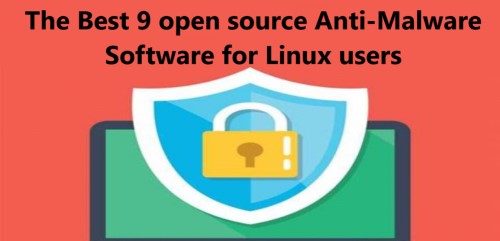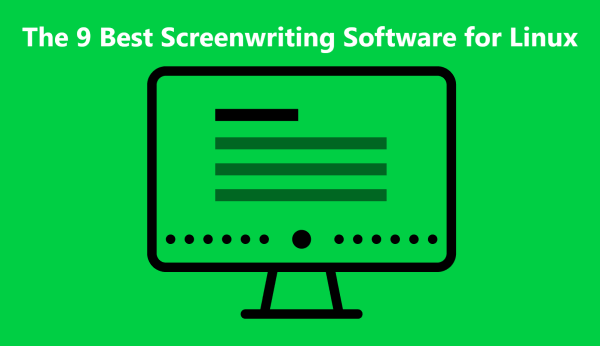Best 3 Open source Agile Project Management software for Linux
Linux SoftwareOpen source Agile Project Management software is a great tool for managing projects, teams and tasks. It provides a complete set of features to help teams collaborate efficiently on projects, manage workloads and track progress. Agile Project Management software is available for Linux and is a great choice for those who want to stick with open source solutions.
Here at IbmiSoft, we will discuss the 9 best open source Agile Project Management software for Linux.
Table of contents [Show]
1. Redmine
Redmine is an open source, web-based project management and issue tracking application. It is written in Ruby on Rails and is available for Linux, Windows and Mac OS X. It is highly customizable and features a wide variety of features, including Gantt charts, calendars, forums, activity feeds, and much more. Redmine also offers integration with other systems and services, such as Subversion, Git, and Mercurial.
Redmine's Official Website: https://www.redmine.org/
Features of Redmine includes:
- Issue tracking
- Gantt charts
- Customizable workflow
- Project forums
- Activity feeds
- Subversion, Git and Mercurial integration
Pros of Redmine includes:
- Easy to use
- Highly customizable
- Wide range of features
- Integrates with other systems
Cons of Redmine includes:
- Interface can be confusing to new users
- Not as well-known as other project management software
- Limited customization options
How to install Redmine on any Linux Distribution ?
1. Install the necessary dependencies with the command:
$ sudo apt-get install ruby-full build-essential zlib1g-dev
2. Download the Redmine source code with the command:
$ wget http://www.redmine.org/releases/redmine-x.x.x.tar.gz
3. Extract the downloaded file with the command:
$ tar -xzvf redmine-x.x.x.tar.gz
4. Change to the extracted directory with the command:
$ cd redmine-x.x.x
5. Install Redmine with the command:
$ sudo gem install bundler && bundle install --without development test
6. Create a database for Redmine with the command:
$ mysql -uroot -p
7. Create a database user and grant permissions with the following commands:
CREATE USER 'redmine'@'localhost' IDENTIFIED BY 'password';
GRANT ALL PRIVILEGES ON redmine_production.* TO 'redmine'@'localhost';
FLUSH PRIVILEGES;
8. Exit the MySQL shell with the command:
$ exit
9. Copy the database configuration file with the command:
$ cp config/database.yml.example config/database.yml
10. Edit the configuration file with your preferred text editor
11. Create the database with the command:
$ rake db:migrate RAILS_ENV=production
12. Start the Redmine server with the command:
$ ruby bin/rails server webrick -e production
13. Access Redmine in your browser at http://localhost:3000
2. ProjectLibre
ProjectLibre is an open source, cross-platform project management application. It is written in Java and is available for Linux, Mac OS X, and Windows. It is highly customizable and features a wide variety of features, including Gantt charts, resource management, and cost tracking.
ProjectLibre's Official Website: https://www.projectlibre.com/
Features of ProjectLibre includes:
- Gantt charts
- Resource management
- Cost tracking
- Earned Value analysis
- Scheduling
- Risk analysis
Pros of ProjectLibre includes:
- Easy to use
- Highly customizable
- Wide range of features
- Cross-platform
Cons of ProjectLibre includes:
- Interface can be confusing to new users
- Not as well-known as other project management software
- Limited customization options
How to install ProjectLibre on a Linux machine ?
1. Download the ProjectLibre package with the command:
$ wget https://www.projectlibre.com/download/projectlibre-x.x.x.deb
2. Install the package with the command:
$ sudo dpkg -i projectlibre-x.x.x.deb
3. Start ProjectLibre with the command:
$ projectlibre
3. OpenProject
OpenProject is an open source, web-based project management and issue tracking application. It is written in Ruby on Rails and is available for Linux, Mac OS X, and Windows. It is highly customizable and features a wide variety of features, including Gantt charts, forums, activity feeds, and much more. It also offers integration with other systems and services, such as Subversion, Git, and Mercurial.
OpenProject's Official Website: https://www.openproject.org/
Features of OpenProject includes:
- Issue tracking
- Gantt charts
- Customizable workflow
- Project forums
- Activity feeds
- Subversion, Git and Mercurial integration
Pros of OpenProject includes:
- Easy to use
- Highly customizable
- Wide range of features
- Integrates with other systems
Cons of OpenProject includes:
- Interface can be confusing to new users
- Not as well-known as other project management software
- Limited customization options
How to install OpenProject on a Linux machine ?
1. Install the necessary dependencies with the command:
$ sudo apt-get install ruby-full build-essential zlib1g-dev
2. Download the OpenProject source code with the command:
$ wget http://www.openproject.org/releases/openproject-x.x.x.tar.gz
3. Extract the downloaded file with the command:
$ tar -xzvf openproject-x.x.x.tar.gz
4. Change to the extracted directory with the command:
$ cd openproject-x.x.x
5. Install OpenProject with the command:
$ sudo gem install bundler && bundle install --without development test
6. Create a database for OpenProject with the command:
$ mysql -uroot -p
7. Create a database user and grant permissions with the following commands:
CREATE USER 'openproject'@'localhost' IDENTIFIED BY 'password';
GRANT ALL PRIVILEGES ON openproject_production.* TO 'openproject'@'localhost';
FLUSH PRIVILEGES;
8. Exit the MySQL shell with the command:
$ exit
9. Copy the database configuration file with the command:
$ cp config/database.yml.example config/database.yml
10. Edit the configuration file with your preferred text editor
11. Create the database with the command:
$ rake db:migrate RAILS_ENV=production
12. Start the OpenProject server with the command:
$ ruby bin/rails server webrick -e production
13. Access OpenProject in your browser at http://localhost:3000
[Need Technical Support ? We are here. ]
This guide covers the 9 best open source Agile Project Management software for Linux, their official websites, features, pros and cons, and how to install them via terminal. Each of these applications offer a wide range of features and can be easily customized to suit the needs of your project. We hope you have found this tutorial useful.
Main features of an Agile Project Management software includes:
- Task Prioritization: Agile project management software allows project managers to prioritize tasks based on their importance and urgency. This ensures that the most important tasks are completed first and helps to keep the project on track.
- Scrum Boards: Scrum boards are a great way to track progress and tasks within an Agile project. Scrum boards provide a visual representation of the project's progress and help to keep tasks organized and on track.
- Sprint Planning: Sprint planning is an important part of Agile project management. It allows project managers to plan out their project’s timeline, budget, and scope.
- Burndown Charts: Burndown charts are a great way to track the progress of a project over time. They provide a visual representation of how much work is left to be completed and how quickly it is being done.
- Kanban Boards: Kanban boards are an Agile project management tool that helps to visualize the workflow of a project. This allows project managers to easily identify where tasks are in the workflow and how long they have been there.
- User Stories: User stories are a great way to identify the needs of a project’s stakeholders and prioritize tasks accordingly. User stories provide a more detailed look at the project’s requirements and help to ensure that the project is meeting its goals.
- Estimation: Estimation is an important part of Agile project management. Estimation helps to ensure that tasks are completed within the allotted timeframe and that the project is on track to meet its objectives.
- Iterative Development: Iterative development is a process that allows for continual improvement of a project by breaking it down into smaller pieces and completing them one at a time. This allows for more flexibility and allows project managers to make adjustments as needed.
- Continuous Integration: Continuous integration allows developers to integrate their code into the main code base more frequently and ensures that changes are tested and released quickly.
- Automated Testing: Automated testing is a great way to ensure that the code is bug-free and functioning properly. Automated testing helps to reduce the amount of time required for manual testing and ensures that the code is tested thoroughly.
- Code Reviews: Code reviews are an important part of Agile project management. They allow developers to review each other’s code and ensure that it is of high quality and meets the project’s standards.
- Issue Tracking: Issue tracking is a great way to keep track of any issues or bugs that arise during the development of a project. This helps to ensure that issues are addressed quickly and that the project is running smoothly.
- Retrospectives: Retrospectives are a great way to review the progress of a project and identify areas for improvement. They help to ensure that the project is running smoothly and that any issues are identified and addressed quickly.
- Time Tracking: Time tracking is an important part of Agile project management. It helps to ensure that tasks are completed on time and that the project is staying on track.
- Collaboration: Collaboration is another important part of Agile project management. It allows different stakeholders to communicate and work together to ensure the success of the project.
- Resource Management: Resource management is a great way to ensure that the project is staying on track and that resources are being used effectively. It helps to ensure that the project is within budget and that all stakeholders are on the same page.
- Project Reports: Project reports provide project managers with an up-to-date view of the project's progress and help to identify areas for improvement.
- Risk Management: Risk management is an important part of Agile project management. It helps to identify and mitigate risks that could have an impact on the project's success.
- Documentation: Documentation is a great way to ensure that the project is running smoothly and that all stakeholders have a clear understanding of the project's goals and requirements.
- Project Portfolio Management: Project portfolio management is a great way to track and manage multiple projects at once. It helps to ensure that each project is on track and that resources are being used effectively.



























